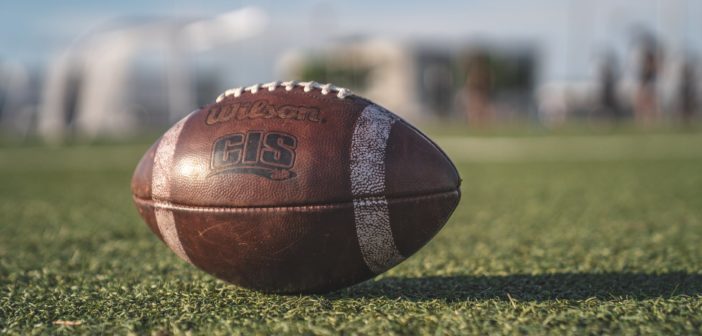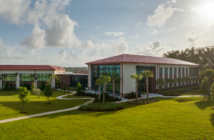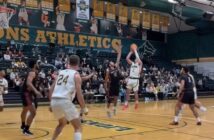By Chad Wise, Lions’ Pride Co-Sports Editor
Men’s and Women’s soccer may be garnering a lot of spotlight for the respective inclusions in the Sunshine State Conference Championships, but a lot of focus is not even on Saint Leo athletics.
College football and the National Football League are in full swing, with renewed vigour for the NFL after the prospect of a delayed or shortened season hung over the summer. With teams like the Tampa Bay Buccaneers sporting a healthy 4-3 record (as of 4 Nov.) and recent success of the nearby University of Florida’s program, fans of gridiron football on campus may feel a bit of withdrawal.
New additions to university athletics, such as a Women’s Lacrosse program and an NCAA regulation field, may cause a stir in students, faculty, and alumni hoping for the resurrection of a football program. But, according to Director of Athletics Fran Reidy, the sport is not a short-term priority.
“Football, here in the South, is obviously a big sport,” Reidy said. “I think you can do a lot with it in terms of community, both external and internal. From a community standpoint, it would be exciting.”
“I certainly would like to see it.”
Despite the pros of bridging the gap between the school and the community, there are plenty of cons, as well.
“First of all, only one other team in our conference has football, there’s only one other Division II school in the state that plays it, and that’s Florida Tech, and they just started. Who would we play, what would that schedule look like, how far would we have to travel? Those kind of things.
“The second part of that is, obviously, the cost involved. To put it into perspective, there were a lot of things over the last decade to fifteen years that, I think, were properly prioritised in terms of if we were going to spend a large sum of money like football would cost – we needed new residence halls, we needed a community center. There were many things, from a University standpoint, not having anything to do with athletics, that needed to be done.”
“From a priorities standpoint, the school has done what and academic institution should do. It’s built the most important infrastructures first.
“We did have club football here; it was in the seventies, it was never a varsity sport. They played a variety of schools; some Division III’s, military-based teams. It was never Division II .
“When I started, we had eight sports, we now have seventeen sports. We’ve been growing quite a bit. We haven’t added football because there weren’t other schools to play. We were the leader in lacrosse, and you could have that same argument, ‘Well, no one plays lacrosse in the South, why did you start lacrosse?’
“Those Northern teams were always coming down here on their spring trips, so we knew we would have schools to play. In football, they don’t necessarily go on those spring training trips.”
Scrimmages against the big Division I schools like Florida and Florida State probably would not be a morale boost, either. However, one boost for the school would be enrolment.
“There was a time when people thought it should be used as an enrolment-driver. You could instantly put another eighty students on this campus that wouldn’t otherwise be here. When the population dwindled to around seven hundred students, if you thought about all of a sudden infusing a hundred football players, they could literally take over and have a culture and a power that, quite frankly, we were not real comfortable with.
“Now that we’re at 1800 getting ready to grow to 2000, it would be a different animal. But also, we don’t need anything to drive that enrolment, with the quality of our institution drawing students.”
The costs don’t just include capital and the addition of more students, Title IX is also a big factor.
“The spending would be more for football. You’d have to make sure the women athletes are given the same quality of equipment. The interesting thing is, though, we’re pretty close to fifty-fifty in our population, it used to be sixty-forty male to female. If you took those male football players and added them to the equation, in some ways it would help our overall male population on campus, which would lessen some of the gender or title differences.
“The reality is that we would probably have to add a couple of women’s sports.”
One option? A track team.
“The new field that was just built, if you look at where the field sits, the infrastructure was constructed within it to add a track. We didn’t do that now, but it is ready to have a track added. I’ve also had presentations that say you don’t need a track to train for all of your running events.
“Right now, we are one of the very few schools with everything on campus. Our students don’t have to go anywhere to compete or even practice. For football we would probably have to rent Pasco High School, rent a facility to do that. That’s not a deal-breaker for us, but we like having control and having our athletes compete on campus.”
When asked if he thought potential students picked schools based on having a football team or not, Reidy agreed that it played a factor.
“I do believe that students have a list, and on many of those lists is football. I think some students don’t look at us because we don’t have football.
“Not a wise move,” he jokes.
There are alternatives for prospective students, though, and successful ones, at that.
“I think basketball has the potential to be our magnet sport. But certainly [lacrosse]has been our biggest draw over the last couple of years. We track attendance. It has some of those elements: it’s very fast-moving, there’s some contact, typically a lot of scoring. Winning always helps.”
Women’s soccer has the potential this year to be a winner, and the Men’s lacrosse program will be looking to get back to winning ways in the spring. Football will long be over by the time lacrosse season starts.





